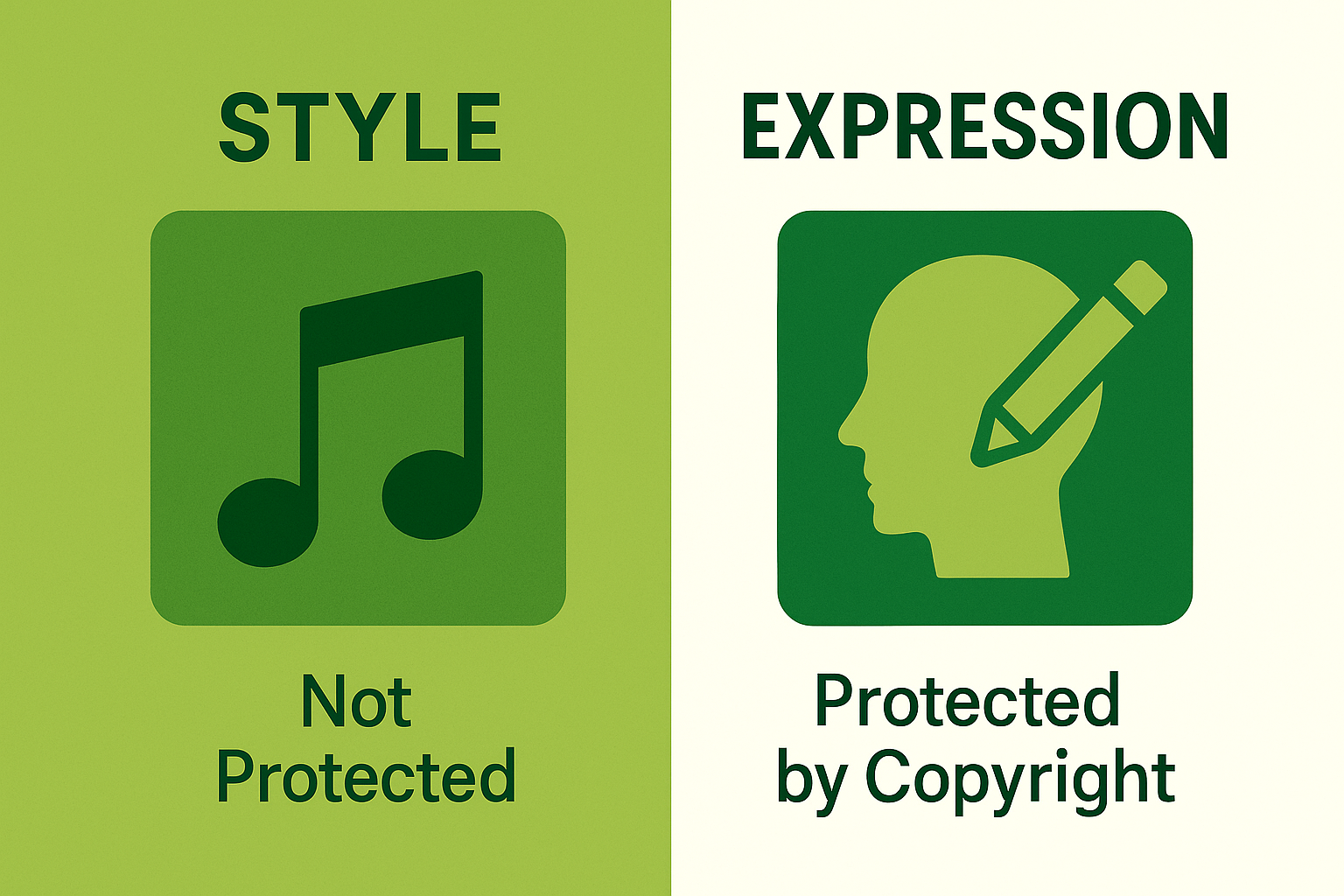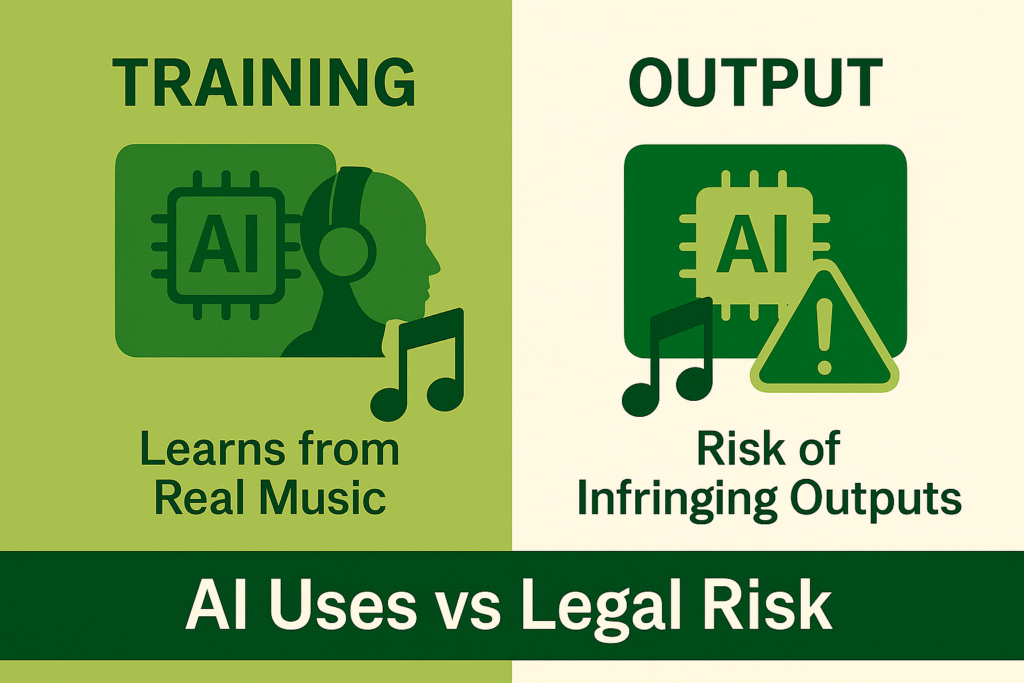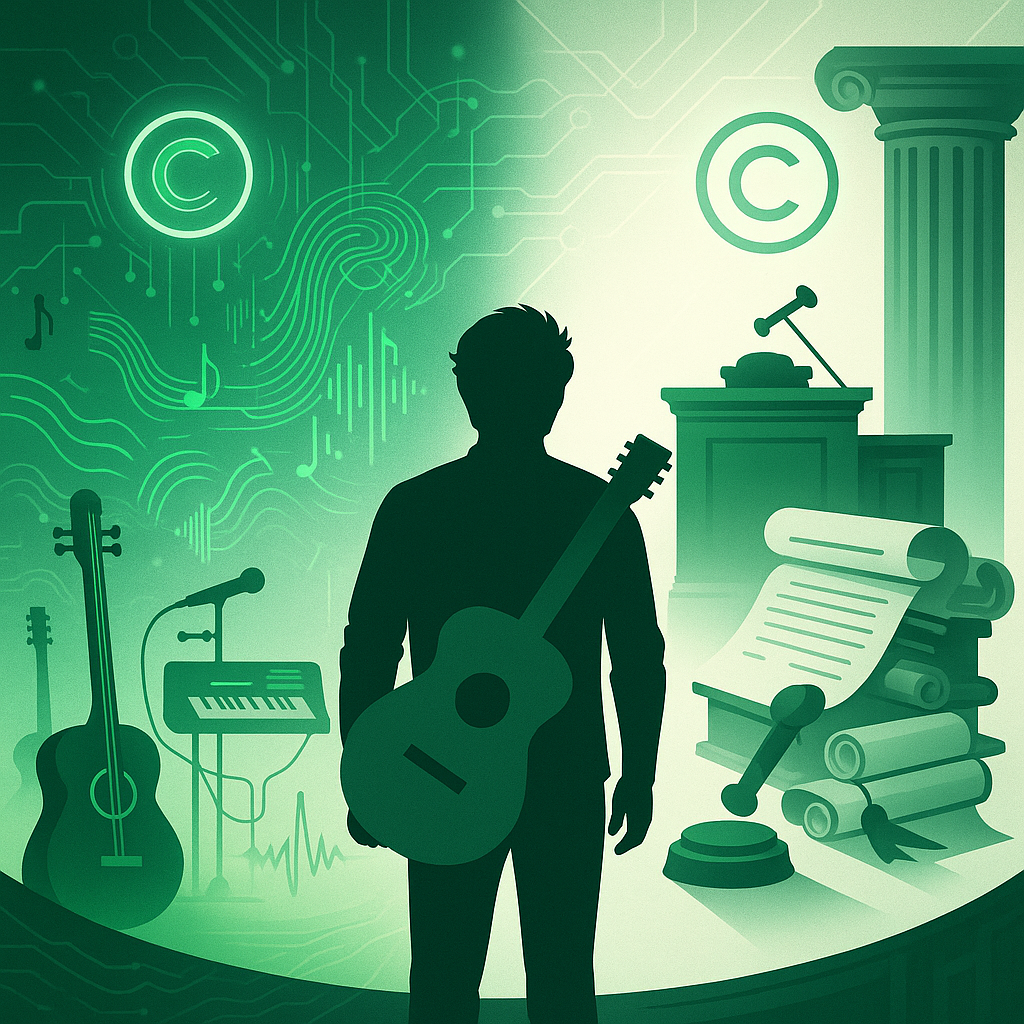Music Copyright Is Being Redefined Globally
Music copyright is now the centerpiece of some of the most complex legal battles in creative industries. When the U.S. Supreme Court declined to revive the copyright suit against Ed Sheeran in June 2025, it sent a clear message: music copyright protects originality, not common structures or styles.
The ruling also foreshadowed the growing storm over AI-generated music. What if a song sounds like Drake or is “trained” on Beyoncé’s voice? What happens when AI learns from copyrighted songs without a license? These questions are now testing the very foundations of music copyright across jurisdictions.
Executive Summary
Ed Sheeran’s Supreme Court win set new limits on music copyright.
AI music generation is now central to global copyright debates.
Canada, EU, and US courts differ on what AI can “train on.”
This blog explains what is and isn’t protected under music copyright law in 2025.
What Happened in the Ed Sheeran Case?
Structured Asset Sales v. Sheeran began in 2016, alleging that Thinking Out Loud infringed Marvin Gaye’s Let’s Get It On.
Here’s how the case unfolded:
| YEAR | EVENTS UNFOLDED |
| 2016–2018 | Lawsuits filed by heirs of Ed Townsend (Gaye’s co-writer) and SAS. |
| 2023 | Jury found no infringement. Sheeran even played both songs live in court to show their distinction. |
| 2024 (2nd Cir.) | The U.S. Court of Appeals ruled the chord progression was too generic to be protected. |
| 2025 | SCOTUS declined to hear the appeal, letting the lower ruling stand. |
“The melody and harmonic rhythm shared by both songs are building blocks — not protected expressions.”
Structured Asset Sales, LLC v. Sheeran, No. 23-905 (2d Cir. Nov. 1, 2024)
What Does Music Copyright Actually Protect?
| ELEMENT | PROTECTED | NOTES |
| Lyrics | Yes | Original lyrics are always protected |
| Melody | Yes | If it is distinct and original |
| Chord Progression | No | Too common to protect |
| Rhythm/Tempo | No | Functional element, not expressive |
| Arrangement/Orchestration | Yes | If unique and creative |
| Mood, Genre, Style | No | Not protectable under copyright |
In short, music copyright law focuses on original expression, not standard elements used across genres.
Musical Copyright in the Age of Streaming and TikTok Remixes
The way music is consumed and remixed today has dramatically evolved. Platforms like TikTok, YouTube Shorts, and Instagram Reels thrive on short-form, audio-visual snippets that are often layered with licensed or unlicensed tracks. Many viral trends involve transforming popular songs, whether by slowing them down, altering pitch, or overlaying dialogue, which raises questions of derivative use.
However, most of this usage is protected either through platform-wide licenses or the de minimis principle, where the copied segment is too trivial to constitute infringement. Still, artists have begun taking action when remixes or AI re-creations misrepresent their identity or dilute their brand.
This intersection of streaming and remix culture with music copyright is now a core part of modern IP litigation, one that is evolving in real time.
Is Musical Style Protected by Copyright?
Many assume that mimicking the “feel” or “groove” of a popular song amounts to copyright infringement. But under established music copyright law, style, mood, and genre are not protected, only original musical expression is.
This principle was reaffirmed in Skidmore v. Led Zeppelin (2020), where the U.S. Ninth Circuit Court of Appeals held that the chord progression and arpeggios in the song Taurus, which were claimed to have inspired Stairway to Heaven, were not protectable elements.

“Musical elements like scales, arpeggios, and chords are not original. They belong to the public domain.”
— Ninth Circuit, Skidmore v. Led Zeppelin, 2020
Comparative Perspectives: How Do Other Countries Handle This?
| Country/Region | Legal Position on Music Copyright | AI-Specific Framework |
| United States | Focus on originality and substantial similarity | No clear law yet; fair use doctrine debated |
| Canada | Protects original expression, not ideas or style | TDM exceptions under Copyright Act |
| United Kingdom | Protects lyrics, melody, and arrangement | Under EU Directive 2019/790 before Brexit; now evolving |
| European Union | Clear on data mining limits | Article 4, Directive 2019/790 permits TDM unless opted out (EUR-Lex Link) |
| India | Follows Berne Convention; protects melody and lyrics | No express policy on AI yet; case-by-case approach |
AI-Generated Music: Where Do Courts Draw the Line?
A wave of lawsuits now tests the limits of copyright in machine-generated music. Some target the training phase (feeding copyrighted content into AI models), while others focus on the output (AI-generated music that sounds like real artists).
Key Cases:
| Ghostwriter vs. UMG (2023) | Viral AI track Heart on My Sleeve mimicked Drake and The Weeknd. No formal suit filed. |
| UMG & RIAA v. Suno & Udio (2024) | Massive copyright suit for unauthorized AI training. |
| Anthropic Lawsuit (2024–2025) | Court declined injunction, citing fair use ambiguity. |
| Grimes’ Licensing Model (2023) | Offered 50 percent royalties for any AI song using her voice. |
How AI Models Interact with Copyrighted Music
The latest generation of AI music tools including Suno, Udio, and Anthropic’s Claude rely on large-scale ingestion of data that may include copyrighted songs, lyrics, and vocals. These models analyze existing works to learn stylistic patterns and generate new outputs that sound convincingly human.
Legal Stages of AI Music and Copyright Risk
| Stage | What Happens | Legal Position (US) | Legal Position (EU) |
| Training Phase | The AI model scans and analyzes large volumes of songs, lyrics, melodies, and vocal styles | Argued to be fair use (nonpublic, transformative) | Allowed under Article 4, Directive 2019/790, unless rights holder opts out |
| Output Phase | The model generates music that may resemble real works | Risk of infringement if outputs are substantially similar | Infringement risk remains, regardless of lawful training |
“Copyright law must evolve to draw clearer lines between inspiration, transformation, and imitation — especially now that AI is becoming a collaborator in the creative process.”
U.S. Copyright Office AI Guidance 2023
Licensing vs. Litigation: How Should the Music Industry Respond?
As the boundaries of music copyright are tested, two distinct legal strategies have emerged worldwide: proactive licensing models versus aggressive litigation. Each has benefits and limitations.
Strategic Approaches to AI Music Copyright
| Approach | Description | Adopted In | Strengths | Challenges |
| Licensing | Creators or rights holders issue licenses for training or remixing AI content | UK (proposed), Canada, some EU states | Balances innovation and rights, monetizes AI use | Needs new infrastructure and rights tracking tools |
| Litigation | Rights holders file lawsuits for copyright infringement in training or outputs | US (e.g., UMG v. Suno, SAS v. Sheeran) | Creates precedents, deters infringement | Time consuming, expensive, inconsistent outcomes |
The global industry may ultimately rely on a mix of approaches, pairing licensing marketplaces with litigation against noncompliant actors. As AI music models evolve, legal clarity will depend on combining ethical licensing, clear contract terms, and enforceable copyright protections.
Glossary for Quick Reference
| Substantial Similarity | Legal test to compare original and alleged infringing works |
| Transformative Use | New expression or meaning added to original work (part of fair use test) |
| TDM (Text and Data Mining) | Technique used in AI training, including on music lyrics |
| Derivative Work | A work based on or adapted from another copyrighted work |
What This Means for Artists, Lawyers, and Developers

Artists must now decide whether to assert control through legal tools or engage with AI creatively. Developers must ensure their models do not cross the thin line between inspiration and infringement. And lawyers must balance innovation with protection.
Platforms that build trust, transparency, and consent will likely shape the next decade of music law.
Final Takeaway: Music Copyright Is Evolving Creatively and Legally
The Ed Sheeran case may have closed one chapter, but AI has opened another. As machine creativity meets human originality, music copyright law must stretch, adapt, and innovate, just like the art it protects.

FAQs on Music Copyright
| Q1.Can AI-generated music be copyrighted? Yes, but the copyright may only cover human-authored contributions unless AI use is minimal and tool-like. |
| Q2. Can someone sue if AI music sounds like their style? Only if specific protected elements (melody, lyrics, etc.) are copied — style or mood alone isn’t protectable. |
| Q3. Do I need a license to train AI on public music? Usually yes, unless you have lawful access and the jurisdiction allows exceptions (e.g., under EU’s Article 4 of Directive 2019/790). |
| Q4. Is the Ed Sheeran ruling final? Yes. The U.S. Supreme Court declined to hear the appeal in 2025, letting the appellate ruling stand. |
References
- Structured Asset Sales v. Sheeran, No. 23-905 (2d Cir. 2024)
- Skidmore v. Led Zeppelin, 952 F.3d 1051 (9th Cir. 2020)
- Directive (EU) 2019/790, Article 4 (Text and Data Mining)
- UMG & RIAA v. Suno, Inc. (2024) – CourtListener Docket
Read Also – Related LexNova Blogs
- AI Copyright: Can Authors Win Against Big Tech? A real-world look at how authors are taking legal action against AI giants over training data misuse.
- AI and Copyright 2025: Can You Really Own What AI Creates? A global exploration of AI-generated content, authorship rights, and legal ownership in the age of automation.
Need Help with AI Music Licensing?
Our team at LexNova Consulting works with musicians, developers, and creative startups to help them draft AI-safe licensing agreements, protect original content, and stay ahead of global music copyright developments.
Disclaimer: This blog is for informational purposes only and does not constitute legal advice. For specific queries, please consult a qualified professional.

